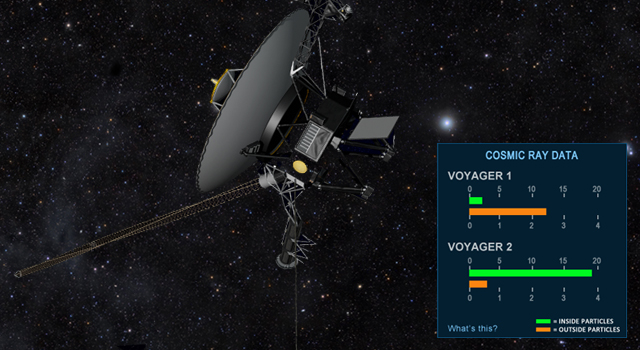NASA has made it possible for everyone to follow the fate of Voyager 1

About a month ago, a controversy flared up in this topic regarding the exciting fact of whether the Voyager-1 automatic probe left the solar system or not yet - though, the essence of the dispute was not a fact, but which source is more authoritative.
Now NASA has become the arbiter of this dispute (figuratively speaking, of course): in one of the latest updates of the agency’s resource dedicated to the Voyager-1 mission, an interactive sensor appeared according to which one can almost definitely judge whether the device has left the heliosphere or not.
Two indicators on the page, showing the level of cosmic radiation recorded by Voyager-1 and its twin Voyager-2, make it possible to assess the position of the probes relative to the solar system boundary, guided by the speed of charged particles arriving from outside and inside the heliosphere. Thus, fast moving protons are identified as particles of the outer boundary of the solar system, while slow ones are, on the contrary, recognized as belonging to the heliosphere. Thus, if the level of "non-native" protons increases significantly, and this ratio is stable, this will mean that the probe is indeed in the interstellar space.
')
Data on the page is updated every six hours. In general, judging by the current indicators, humanity is still marking time at the door of the Solar System and the loud statements had no basis.
On the same page, you can see not only the constantly changing indicators showing the distances to both Voyagers in kilometers and astronomical units, but also a colorful slide show describing the details of the mission.
[ NASA ]
Source: https://habr.com/ru/post/177917/
All Articles